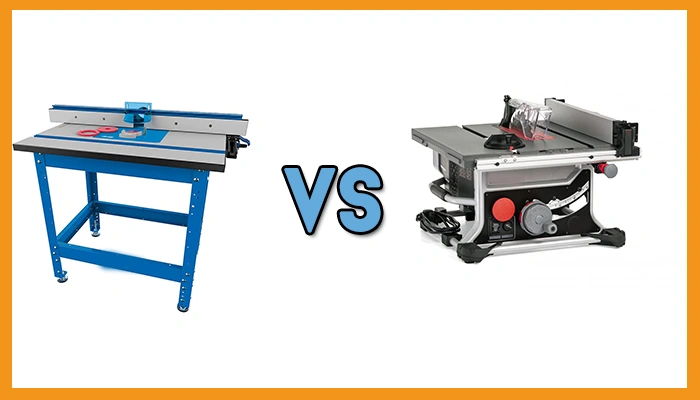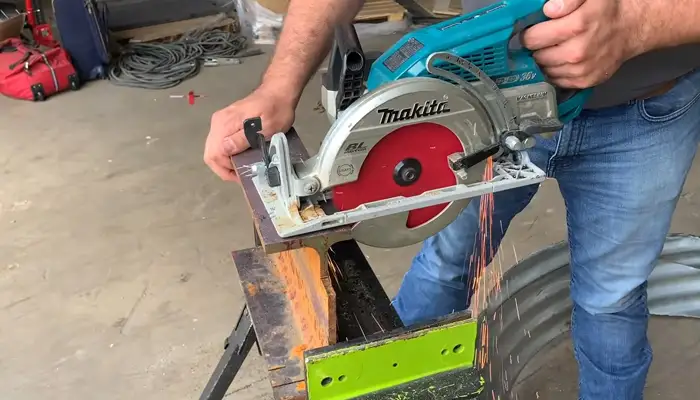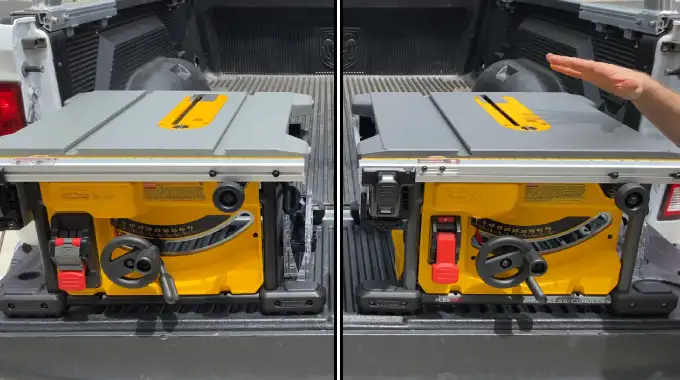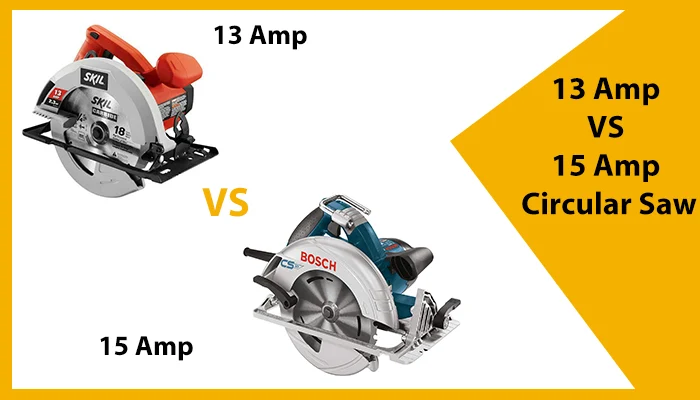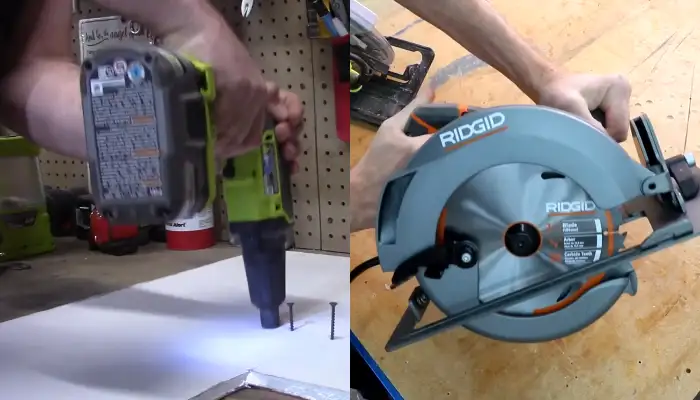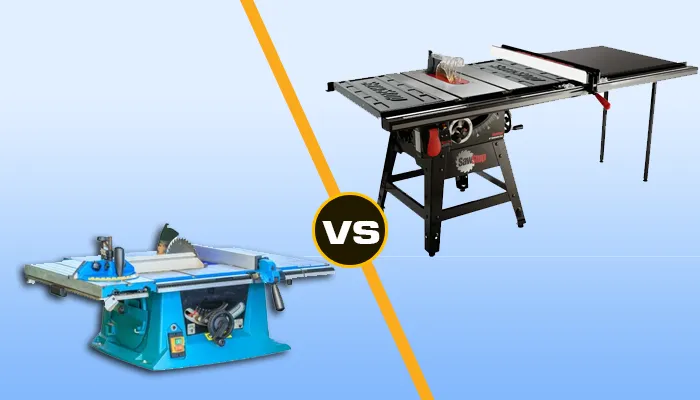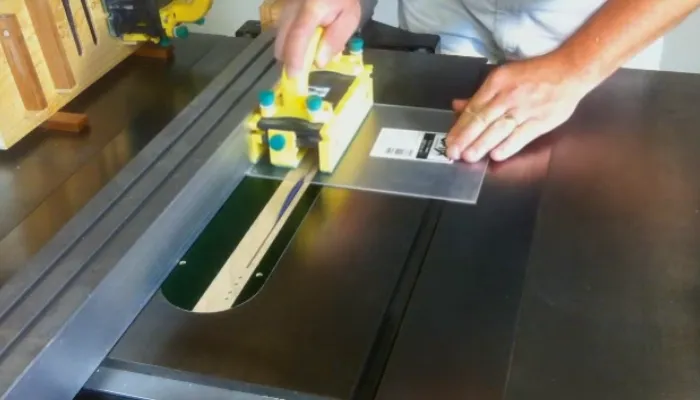Router Table vs Table Saw: 6 Differences
The router table and table saw are two essential woodworking tools that can help you transform ideas into reality. Both tools are designed to cater to specific needs, and knowing their differences is essential to choosing the right one for your project.
As a woodworking enthusiast, I researched the differences between router tables and table saws to understand each better. Based on my findings, one noticeable difference between the router table and the table saw is their design and configuration.
Router tables boast a spindle and cutter heads mounted vertically, perfect for delicate tasks. On the other hand, table saws feature a circular blade mounted beneath the table, making straight cuts quick and easy.
I will discuss all the differences between these two woodworking tools in detail so that you can decide which tool is most suitable for your specific needs.
- Large Aluminum Top for Precision
- Rigid Mounting Plate for Compatibility
- Extra Tall Adjustable Aluminum Fence
- Dedicated Dust Collection Port
- Convenient Cord-Wrap Storage
- Compact 8-1/4 Inch Design
- Precision Rack & Pinion Fence
- Advanced Site-Pro Guarding System
- Robust Metal Roll Cage
- Efficient Dust Port Design
6 Differences Between Router Table and Table Saw
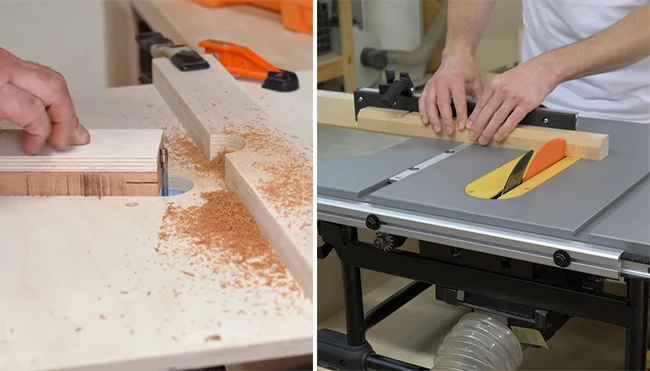
I found that the router table and table saw differ in 6 categories, including:
- Design and configuration
- Specialized applications
- Depth of cut
- Dust generation and collection
- Safety features
- Noise levels
Explore the key distinctions between these two essential woodworking tools, highlighting their specific features, applications, and advantages.
1. Design and Configuration
A router table is configured with a spindle and cutter heads mounted vertically. This design allows for delicate tasks and offers precision for intricate designs. There are two design options for a router table: a machine bit spindle in the table or a router above the table that can be lowered manually.
Conversely, a table saw features a circular blade mounted beneath the table. This configuration is superior for quick and efficient straight-line cutting, minimizing dust.
The circular blade of a table saw allows for heavy-duty and delicate cuts in woodworking and furniture-making. Additionally, table saws come in both corded and cordless versions, providing flexibility in usage.
2. Specialized Applications
The router table is ideal for intricate woodworking designs, such as creating decorative edges, moldings, and detailed joinery. It excels in template-based tasks, offering accuracy and repeatability for crafting intricate shapes and patterns.
Additionally, the router table handles a wide range of materials, including wood, plastics, and some metals, making it versatile for various crafts beyond traditional woodworking.
On the other hand, the table saw is particularly effective for straight-line cuts across large boards or sheets, making it efficient for tasks like ripping lumber. It’s preferred for projects where precision in straight cuts is a primary requirement.
The table saw also excels in cutting large panels and sheet goods due to its substantial depth of cut, making it suitable for projects involving breaking large sheets into smaller, more manageable pieces.
Furthermore, it’s commonly used for joinery tasks, including accurately creating tenons, dadoes, and rabbets, making it essential for projects requiring precise dimensions and strong joinery.
3. Depth of Cut
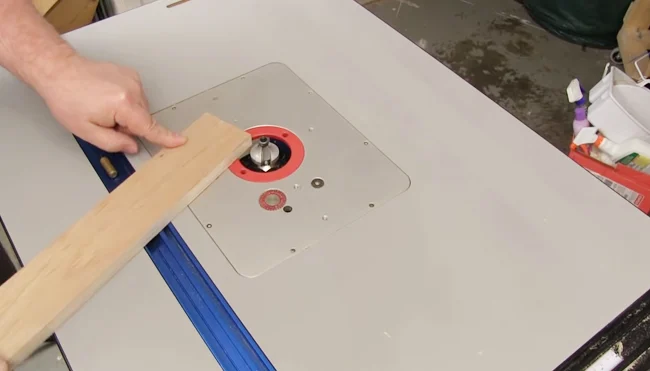
When working with different materials, the router table and table saw offer distinct advantages, including their differences in the depth of cut.
The router table’s depth of cut is typically 3 to 4 mm (1/8 to 3/16 inch). This makes it suitable for shallower operations, but multiple passes may be required for deeper cuts.
Conversely, the table saw offers a more substantial depth of cut, allowing for thicker materials to be processed in a single pass.
With a 10-inch table saw, you can make a maximum cut up to 3.5 inches deep; with a 12-inch table saw, you can cut up to 4 inches deep. This makes the table saw ideal for cutting through thick lumber tasks.
Additionally, if the arbor sizes match, you can use an 8-inch dado blade on a 10-inch table saw to create wider dado cuts or grooves in one pass.
4. Dust Generation and Collection
Based on my findings, the router table tends to generate more dust, making a dust collection system crucial for maintaining a clean workspace. Effective dust collection on a router table enhances visibility and reduces cleanup efforts.
On the other hand, the table saw generates less dust, and not all models have a dedicated dust collection system. However, the dust generated by a table saw is generally manageable, with some models offering built-in collection systems.
5. Safety Features
Comparing the safety features of a router table and a table saw is essential to ensuring your safety while woodworking.
Regarding a router table, although generally considered safe, you need to pay attention to the proximity of your hands to the cutter. Fortunately, router tables have safety features such as feather boards and miter gauges. These tools provide added control and help prevent accidents.
Conversely, table saws can be more hazardous due to the exposed spinning blade. However, manufacturers have implemented safety measures to mitigate risks. These include riving knives, blade guards, and anti-kickback mechanisms. These features work together to minimize the chances of accidents and keep you safe while operating a table saw.
6. Noise Levels
Generally, router tables produce less noise compared to table saws. However, noise levels can vary based on the router model and cutting operations. Some models are quieter than others, and different cutting operations, such as dado cuts or use of a flush-trim bit, may generate more noise than others.
Meanwhile, table saws can be relatively noisy, especially when cutting through dense materials. However, noise levels can also vary among different table saw models.
Some newer saws are designed to minimize noise levels by reducing vibrations and using sound-dampening materials. It’s important to consider the noise level acceptable for your work environment and choose a tool that suits those needs.
Comparison Chart Between a Router Table and Table Saw
| Categories | Router Table | Table Saw |
| Design and Configuration | Configured with vertical spindle and cutter heads. Suited for delicate tasks with two design options. | Mounts a circular blade beneath the table. Superior for quick, efficient straight-line cutting. |
| Specialized Applications | Ideal for intricate woodworking designs, template-based tasks, and versatile material compatibility. | Excels in straight-line cuts, sheet goods, and panel cutting. Commonly used for joinery and dimensional accuracy. |
| Cutting Material Types | Versatile for wood, plastics, and some metals. Ideal for intricate detailing. | Primarily for wood but can handle plastics, aluminum, and brass. Excels in making straight cuts. |
| Depth of Cut | Limited depth (3-4 mm) suitable for shallower operations. May require multiple passes. | Substantial depth for thicker materials in a single pass. Up to 3.5 inches (10-inch saw) or 4 inches (12-inch saw). |
| Dust Generation & Collection | Generates more dust, requiring a collection system. Enhances visibility. | Generates less dust; not all models have a dedicated system. Dust levels are generally manageable. |
| Safety Features | Generally safe with attention to hand proximity. Features like featherboards for added control. | Can be more hazardous due to exposed blade. Equipped with safety features like riving knives and blade guards. |
| Noise Levels | Generally produces less noise, varying by router model. | Can be noisy, especially with dense materials. Noise levels vary among different saw models. |
Can you sharpen the router bits used on the router table?
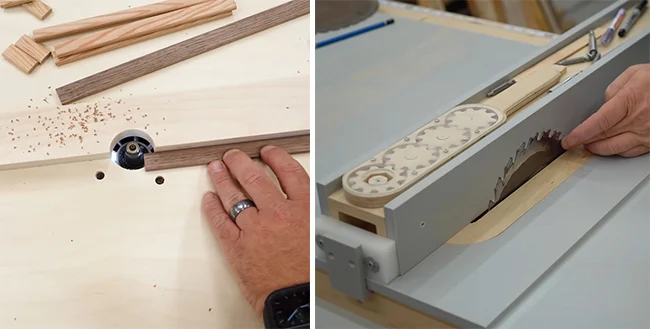
You can easily sharpen the router bits used on your router table. You don’t need any fancy equipment or extensive knowledge. All you need are a few diamond paddles or diamond needle files for smaller bits, a comfortable spot with good lighting, and you’re ready to go.
Regular honing using diamond stones can maintain their sharpness, ensuring optimal performance in your woodworking projects. So, take care of your router cutters, and they’ll take care of your woodworking needs for a long time.
Can you utilize a table saw for cross-cutting and miter cuts?
You can effectively utilize a table saw for both cross-cutting and miter cuts. With the assistance of a miter gauge or additional accessories, you can achieve precise and clean cross-cuts that are perpendicular to the wood grain.
Moreover, the miter gauge also enables you to create angled miter cuts with accuracy, adding versatility to your woodworking projects. To ensure optimal results, it’s crucial to utilize the proper accessories and follow safety guidelines.
Furthermore, to attain optimal outcomes in your woodworking endeavors using a table saw, it is imperative to routinely examine and substitute any old, worn-out, or dull circular-shaped saw blade. A dull or damaged blade can compromise the quality of your cuts, leading to splintering, burning, or uneven edges.
Use Router Table or Table Saw Wisely for Your Woodworking Projects
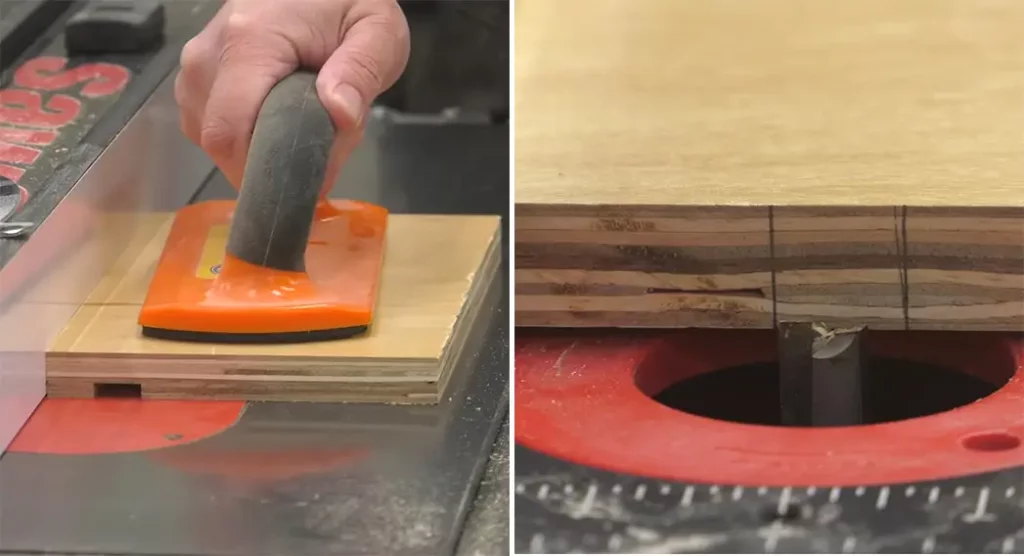
The router table and table saw are two distinct tools with different purposes in woodworking. Understanding the differences that I’ve shared empowers you to choose wisely based on your project needs.
Whether it’s the precision of intricate designs with a router table or the efficiency of straight-line cuts with a table saw, each tool has its unique strengths.
Consider the applications, and confidently select the tool that aligns with your woodworking aspirations. Your projects will flourish as you harness the capabilities of these essential woodworking companions.
- Precision Routing with Dual Storage
- Easy Setup for Quick Assembly
- Versatile Compatibility for Various Projects
- Innovative Technology Ensures Durability
- User-Friendly with Enhanced Bit Storage
- Powerful 15 Amp Motor
- Versatile 10-inch Carbide Blade
- Precision Rack and Pinion Fence
- Durable Construction for Stability
- User-Friendly Portable Design
Last update on 2025-11-23 / Affiliate links / Images from Amazon Product Advertising API

